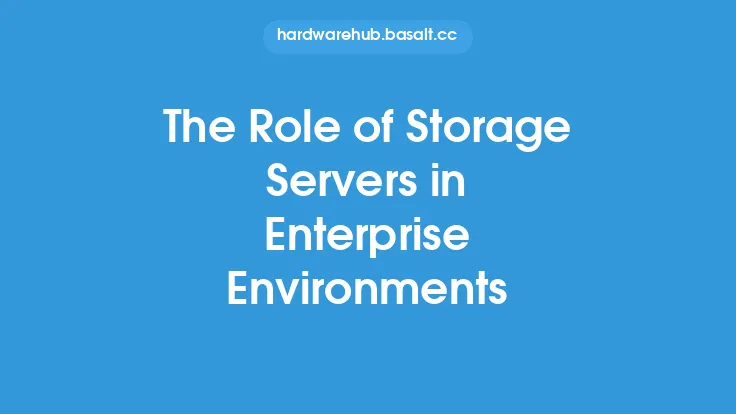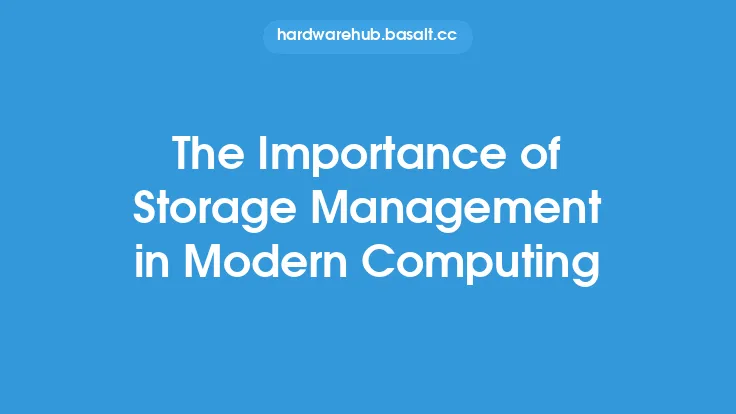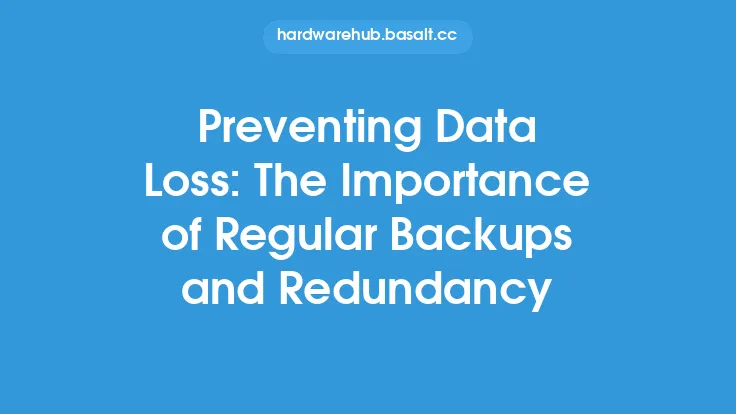Scalability is a critical factor in the design and implementation of storage arrays and servers. As data continues to grow at an exponential rate, organizations need to ensure that their storage infrastructure can keep pace with increasing demands. Scalability refers to the ability of a system to handle increased load and demand without compromising performance. In the context of storage arrays and servers, scalability is essential to ensure that data is always available, accessible, and protected.
What is Scalability in Storage Arrays and Servers?
Scalability in storage arrays and servers refers to the ability to increase storage capacity, performance, and connectivity as needed. This can be achieved through various means, including adding more disks, expanding storage controllers, or upgrading network interfaces. A scalable storage array or server should be able to handle increased workloads, support more users, and provide faster data access without sacrificing reliability or performance. Scalability is not just about adding more hardware; it's also about ensuring that the system can efficiently manage and utilize the added resources.
Benefits of Scalability in Storage Arrays and Servers
The benefits of scalability in storage arrays and servers are numerous. Some of the most significant advantages include:
- Increased storage capacity: Scalable storage arrays and servers can handle growing data needs, ensuring that organizations have enough storage space to accommodate their data.
- Improved performance: Scalable systems can handle increased workloads, providing faster data access and transfer rates.
- Enhanced reliability: Scalable systems can be designed to provide redundancy and failover capabilities, ensuring that data is always available and protected.
- Reduced costs: Scalable systems can help reduce costs by minimizing the need for frequent upgrades or replacements.
- Simplified management: Scalable systems can be designed to provide centralized management, making it easier to monitor and manage storage resources.
Types of Scalability in Storage Arrays and Servers
There are several types of scalability in storage arrays and servers, including:
- Horizontal scalability: This involves adding more nodes or devices to a system to increase storage capacity and performance.
- Vertical scalability: This involves upgrading individual components, such as processors or memory, to increase performance and capacity.
- Scale-out scalability: This involves adding more devices or nodes to a system, with each node providing additional storage capacity and performance.
- Scale-up scalability: This involves upgrading individual components to increase performance and capacity.
Designing Scalable Storage Arrays and Servers
Designing scalable storage arrays and servers requires careful planning and consideration of several factors, including:
- Storage capacity: The amount of storage space required to meet current and future needs.
- Performance: The speed and efficiency of data access and transfer.
- Connectivity: The number and type of network interfaces required to support data transfer.
- Reliability: The level of redundancy and failover capabilities required to ensure data availability.
- Management: The ease of monitoring and managing storage resources.
- Cost: The total cost of ownership, including hardware, software, and maintenance costs.
Technologies that Enable Scalability in Storage Arrays and Servers
Several technologies enable scalability in storage arrays and servers, including:
- Storage area networks (SANs): SANs provide a dedicated network for storage traffic, enabling scalable and high-performance storage.
- Network-attached storage (NAS): NAS devices provide scalable file-level storage, making it easy to add or remove storage capacity as needed.
- Object storage: Object storage provides a scalable and flexible way to store and manage large amounts of unstructured data.
- Cloud storage: Cloud storage provides a scalable and on-demand way to store and manage data, with many cloud providers offering scalable storage solutions.
- Flash storage: Flash storage provides high-performance and low-latency storage, making it ideal for applications that require fast data access.
Best Practices for Implementing Scalable Storage Arrays and Servers
To implement scalable storage arrays and servers, organizations should follow several best practices, including:
- Plan for future growth: Organizations should plan for future growth and scalability when designing their storage infrastructure.
- Choose scalable technologies: Organizations should choose technologies that are designed to scale, such as SANs, NAS, and object storage.
- Monitor and manage storage resources: Organizations should monitor and manage their storage resources to ensure that they are being utilized efficiently.
- Test and validate scalability: Organizations should test and validate the scalability of their storage arrays and servers to ensure that they can handle increased workloads and demands.
- Consider total cost of ownership: Organizations should consider the total cost of ownership, including hardware, software, and maintenance costs, when designing and implementing scalable storage arrays and servers.
Challenges and Limitations of Scalability in Storage Arrays and Servers
While scalability is essential in storage arrays and servers, there are several challenges and limitations to consider, including:
- Cost: Scalable storage arrays and servers can be expensive, especially when it comes to high-performance and high-capacity storage.
- Complexity: Scalable storage arrays and servers can be complex to design and implement, requiring specialized skills and expertise.
- Management: Scalable storage arrays and servers can be challenging to manage, especially when it comes to monitoring and managing storage resources.
- Interoperability: Scalable storage arrays and servers may not be compatible with all systems and applications, requiring careful planning and testing to ensure interoperability.
Conclusion
Scalability is a critical factor in the design and implementation of storage arrays and servers. By understanding the importance of scalability, organizations can ensure that their storage infrastructure can keep pace with increasing demands, providing fast, reliable, and efficient data access and storage. By following best practices and considering the challenges and limitations of scalability, organizations can design and implement scalable storage arrays and servers that meet their current and future needs.





